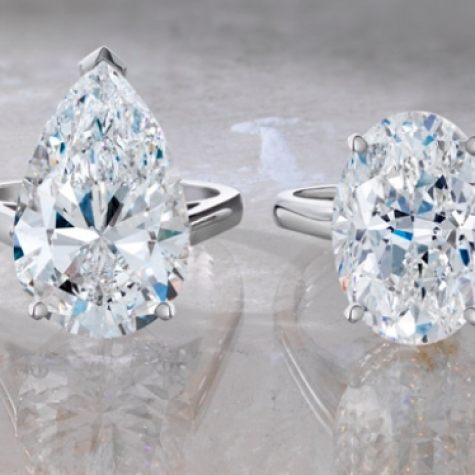Diamonds have played an essential role in the world of jewellery throughout history. They have adorned kings and queens crowns and tiaras for centuries. But nowadays, with synthetic Zirconia becoming more and more popular, who is a girl’s best friend? Let see the results of diamonds X zirconia.
So the bottom question is: is it worth it spending thousands on a gemstone when you can get Zirconia for a few euros instead? Let’s examine both sides.
Why buy a diamond

What a diamond symbolises
The sparkling gemstone is the hardest naturally occurring substance in the world; the only thing that can scratch a diamond is another diamond. This resistant and long-lasting stone has been associated with eternal love and is usually used in engagement rings.
Historically, the traditionally mined diamonds were difficult and rare to find. Something exclusive can only become a sign of status, related to power and wealth. That is why a diamond jewel is THE perfect gift for special occasions and celebrations.
Why diamonds are expensive
Typically, the cost of a gemstone increases according to its rarity. Therefore, comparing the diamond to other much rarer stones such as emeralds, sapphires, or rubies is way less expensive than these precious stones. Coloured diamonds are now in short supply, but contrary to what you may think, colourless diamonds aren’t that rare anymore. As a matter of fact, in the late 1800s, an enormous mine in South Africa was about to flood the market with vast amounts of diamonds. De Beers decided then to buy the mine to control and limit the diamond supply so that the stone wouldn’t lose its value. De Beers also started a strong marketing campaign that put diamond rings as the number one choice for engagement rings.
The value of a diamond is calculated according to the “four C’s”, clarity, carat, cut, and colour, so in this case, size only doesn’t matter. Read here more about the four Cs and how to choose a diamond.
By the way, the Archduke Maximilian of Austria was famously one of the firsts to innovate with a diamond ring when proposing to his future wife, Mary of Burgundy, in 1477.
Why buy zirconia

Advantages of the synthetic zirconia
As told before, Zirconia is a human-made substitute for diamonds. Because it is produced in laboratories, some consider it more eco-friendly and ethical. Just think of the Blood Diamonds, slave labour, and conflicts not that long ago.
Zirconia is produced with different quality levels. The best ones are pretty similar to natural diamonds, and only a trained eye can tell the difference. As a result, it’s becoming a popular and economical choice for fashion jewellery. Zirconia is also used in fashion for clothes, accessories and decoration – did someone say, Swarovski?
Disadvantages of the man-made zirconia
Although they are both very similar, quite a few points differ one from the other. Zirconias aren’t as hard as diamonds, so they are less durable. Zirconia can crack and be scratched more easily. Because of its low economic value, you usually see Zirconia in cheap mountings in low-carat gold or gold plated. You won’t find synthetic substitutes in high-end jewellery. Also, Zirconia is not a gem you can pass on to your children and grandchildren because it won’t withstand the wear&tear of time.
Diamonds x zirconia

Zirconia is made in laboratories, so they have no inclusions, whereas the diamond always has some kind of inclusion or imperfection, even when sometimes it’s invisible to the naked eye.
The colour of the Zirconia is of a perfect diamond with the highest colour grade, which is extremely rare. Most diamonds, like natural stones, have a hint of yellow or brown.
In the light, the Zirconia shines with flashes like a rainbow, much more colourful than the natural gem. It is also heavier than a diamond the same size.
If you breathe on a diamond, the fog on the stone disappears almost immediately. But if you do the same on Zirconia, it will remain foggy longer. You’ll be able to tell quickly one from the other by looking with a magnifying glass at the edges of your stone: a diamond has very sharp edges, but Zirconia’s facets have smooth rounded corners.
Having said all that about diamonds X zirconia, unless you’re looking for an investment, you should buy something that looks good on you, that you like and makes you happy. And, of course, that fits your pocket. And, finally, the design is sometimes more important than the material used when it comes to jewellery.
